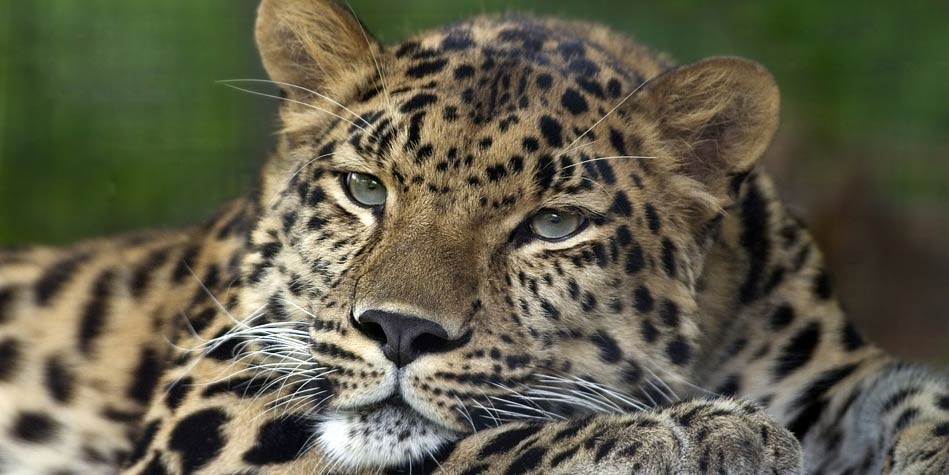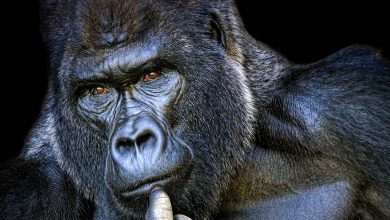Amur leopard (Panthera pardus orientalis)
Far Eastern leopard
The Amur leopard is a magnificent and elusive big cat that inhabits the remote forests of the Russian Far East and northeast China. With its striking coat of golden fur and black rosettes, the Amur leopard is one of the most beautiful and unique subspecies of leopard. But despite its beauty, this magnificent animal is facing a critical threat to its survival, with only a few hundred individuals estimated to exist in the wild. In this article, we will delve into the world of the Amur leopard, exploring its biology, behavior, and habitat. We will also discuss the challenges it faces and the conservation efforts underway to protect this rare and magnificent big cat. So, come with us on a journey to discover the incredible story of the Amur leopard.
The subspecies of Amur and Persian leopards described in this and the next article are among the last remaining populations in Asia. Their fate, like that of the white and black rhinoceroses, is uncertain, one might say – sad.
Classification
- Class: Mammalia
- Order: Carnivora
- Family: Felidae
- Genus: Panthera
- Species: leopard (Panthera pardus)
- Subspecies: Amur leopard (Panthera pardus orientalis)
- Names: Amur leopard, Far Eastern leopard

Occurrence and habitats
It is found in north-eastern China, probably south of Beijing, and on the Korean Peninsula. In the middle of the 20th century, the distribution of Amur leopards was limited to the south-most region of the Ussuri (Primorsky Krai). The northern border includes the Sea of Japan, but in the 1950s, the Amur leopards were observed 50 km (30 mi) north of Vladivostok and in Kedrovaya Pad Nature Reserve. The habitats of the Amur leopard are bordered from the habitats of wild or artificial populations of sika deer. In the winter, they inhabit the rocky slopes of southern regions.
In the 1970s, the population was divided into 3 separate ones, but at the turn of the 20th and 21st centuries, only the one in the south-western part of Primorsky Krai was left, which covers the territory of about 3,000 km2 (1,160 mi²) along the border with China and North Korea.
The individuals of this subspecies move between Russia, China, and North Korea, across the Tumen River, despite a high wire fence marking the border.
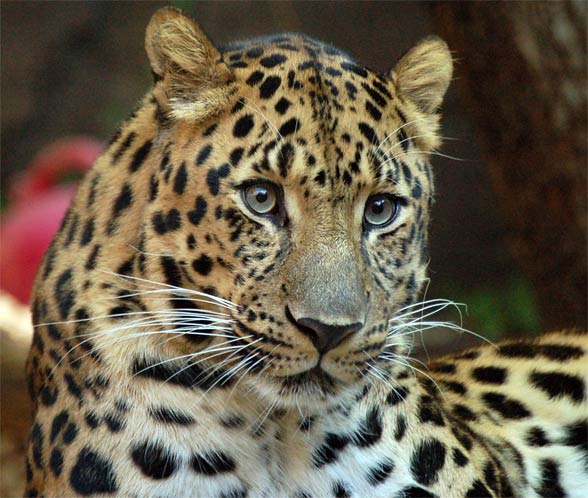
Number of individuals
This is the saddest section of our article. In 2007, there were 14-20 individuals in the wild and 5-6 young Amur leopards. Nowadays, it is believed, that there are 19-26 Amur leopards in the wild. In zoos around the world, there are a little bit more of them than in the wild.
Unfortunately, the Amur leopard has the smallest gene pool among all leopard subspecies, which causes inbreeding that badly affects the quality of genetic material passed on to the next generations. We feel terribly sorry for writing this, but it seems that this beautiful cat is dying out before our eyes. We hope that we won’t have to move this article to the Extinct section…
Characteristics
Appearance
It is distinguished from its other relatives by bright (creamy) coloration and very dark, big, and widely set rosettes and ring shapes. This subspecies is perfectly adapted to living in a difficult, frigid climate – in the winter, the fur is 7 cm (2.8 in) thick. Moreover, contrary to other leopards, this one makes hoarse vocalizations, and roars very rarely. The winter coat changes from light yellow to yellow-reddish with a golden glow, or rusty-reddish-yellow. In the summer, the fur is brighter, and the markings are more distinguished.
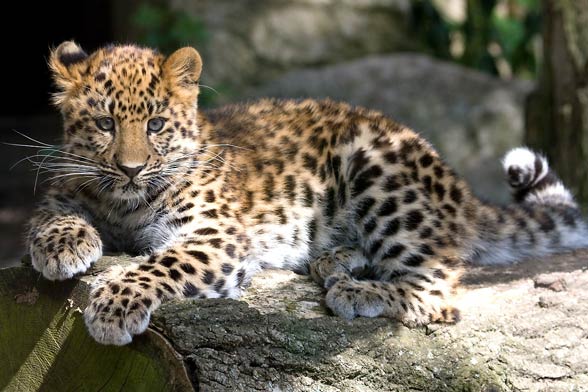
Diet, hunting techniques, lifestyle
Like other leopards, the Amur leopard attacks its prey off guard – it jumps on prey from a distance of several meters. It hunts for many animals, but it feeds mostly on hares and sika deer.
The Amur leopard is very picky when it comes to choosing its territory. It usually chooses basins and natural borders of a given area for its habitats. However, sometimes the territories of two individuals overlap, but only in a small percentage. Depending on the sex, age and size of a family, the acreage ranges from 5,000-30,000 ha (19–116 mi²). Amur leopards happen to use the same hunting and migration trails, and even resting places over many years.
In regions rich in game, Amur leopards don’t migrate or perform so-called vertical migration, following the herds of ungulates. In the Ussuri region, sika deer, wapiti, Siberian musk deer, elks, and boars are the main target of Amur leopards. It hunts hares, badgers, fowl and mice less frequently. In a nature reserve, it hunts mostly does, but also young Asian black bears that are younger than 2 years old.
It seems that males prefer habitats in the vicinity of sika deer stags, and females with the young are often found near hinds’ habitats.

Reproduction
They become sexually mature at the age of 2-3 years, and they are able to reproduce for 10-15 years. The estrus period lasts for 12-18 days per month, and in exceptional cases even for 25 days. Amur leopards breed in the spring and early summer.
The gestation period, as in the Persian leopard, lasts 90-105 days, but usually, it is 92-95 days. Their young (one litter may consist of 1-4 cubs) weigh 500-700 g (1.1–1.5 lb) on average, they open their eyes after 7-10 days, and after 12-15 days they start to crawl. At the age of 2 months, cubs leave the den and start to eat meat, despite the lactation period lasting 5-6 months. Sometimes cubs stay with their mother to her first estrus after pregnancy.
They usually leave their mother at the age of 17-24 months, but in a nature reserve, there were cubs from two different litters staying with their mother.

Detailed information / size
Amur leopard (Panthera pardus orientalis)
- Body length: 107 – 136 cm (42 – 54 in)
- Tail length: 82 – 90 cm (32 – 35 in)
- Height at shoulders: 64 – 78 cm (25 – 31 in)
- Weight:
- males: 32.2 – 48 kg (71 – 106 lb)
- females: 25 – 42.5 kg (55 – 94 lb)
- Speed: 60 km/h (37 mph)
- Jumps: horizontally: 5.8 m (19 ft), vertically: 3 m (10 ft)
- Lifespan: 10-15 years /to 21 years in captivity/
Amur leopard – interesting facts
- The Amur leopard is the only subspecies of the leopard adapted to a cold climate.
- The Amur leopard is considered to be one of the most endangered representatives of big cats – there are 19-26 (maybe 35) individuals left in the wild. All of them live in the Far East.
- The reasons for the extinction of Amur leopards include: deforestation, poaching, the presence of military and training of soldiers in border areas, fire, development of agriculture and infrastructure. Within the Amur subspecies, inbreeding is also the cause of dying out, as it causes the reduction of the gene pool resulting in congenital disorders. Nevertheless, human activity is the main reason for the extinction of this subspecies.
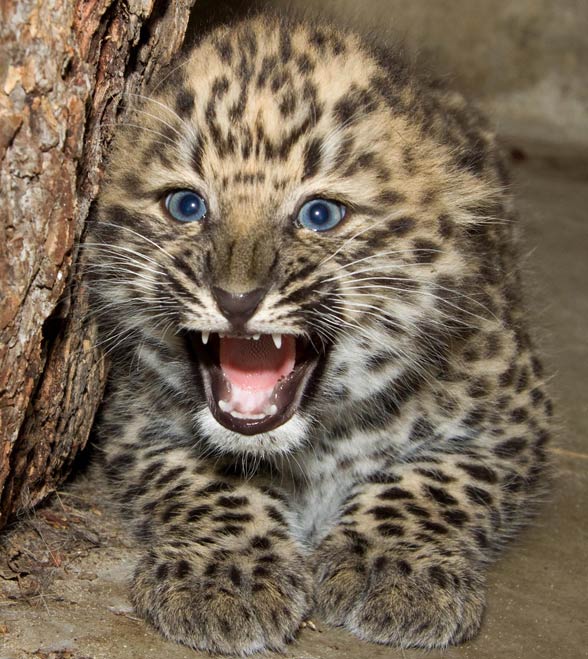
Recommended
- Persian leopard
- Siberian tiger
- Bengal tiger
- Sumatran tiger
- Indochinese tiger
- Malayan tiger
- South China tiger
- Tigers
- White tigers
- Lions
- White lions
- Lion vs tiger
- Liger
- Animal fights
- American lion
- European cave lion
- Smilodon – Saber-toothed tiger
- Fights of animals
- Big cats
- Black panther
- Leopard
- Snow leopard
- African Lion
- Fastest animals
- Fastest birds

